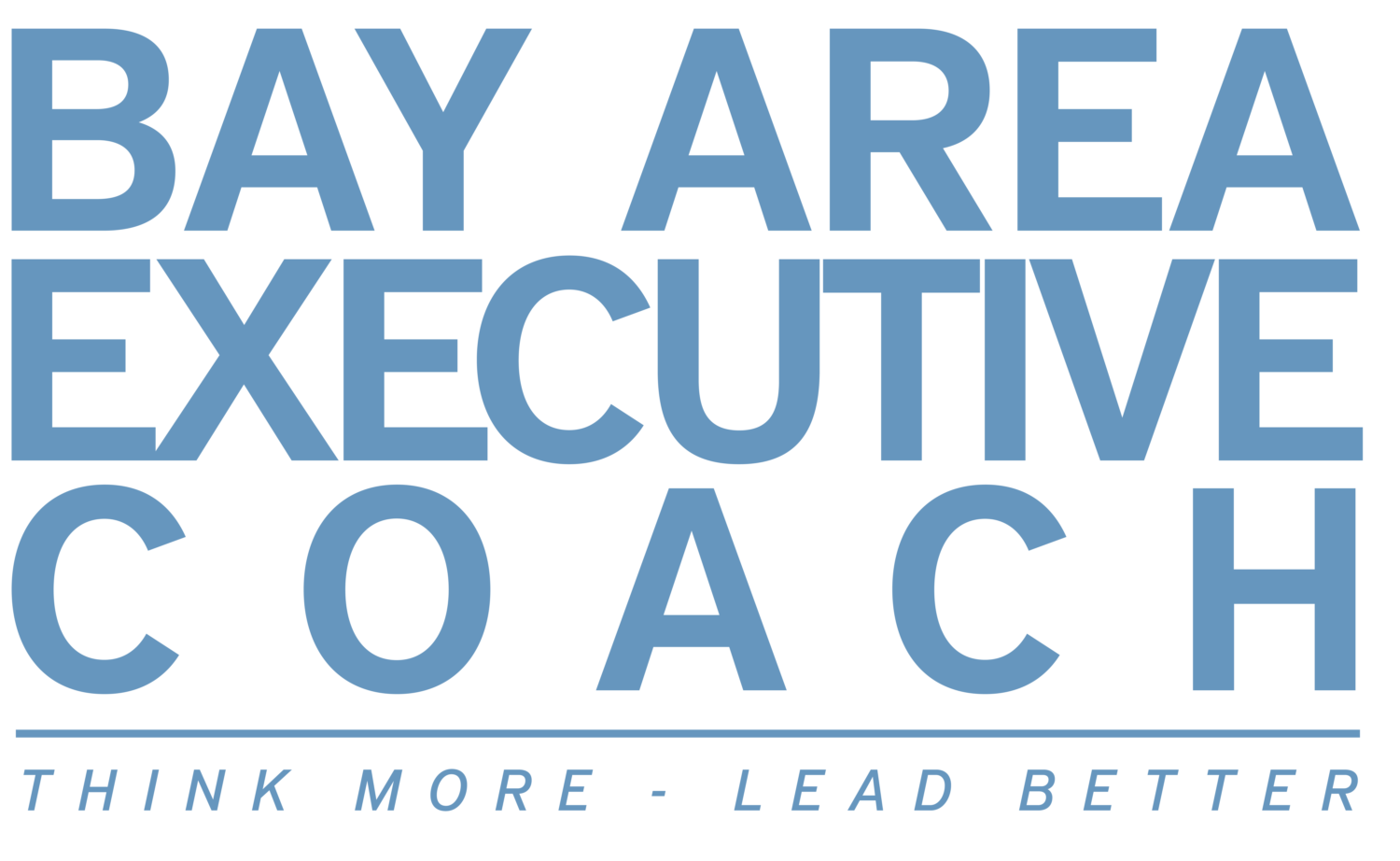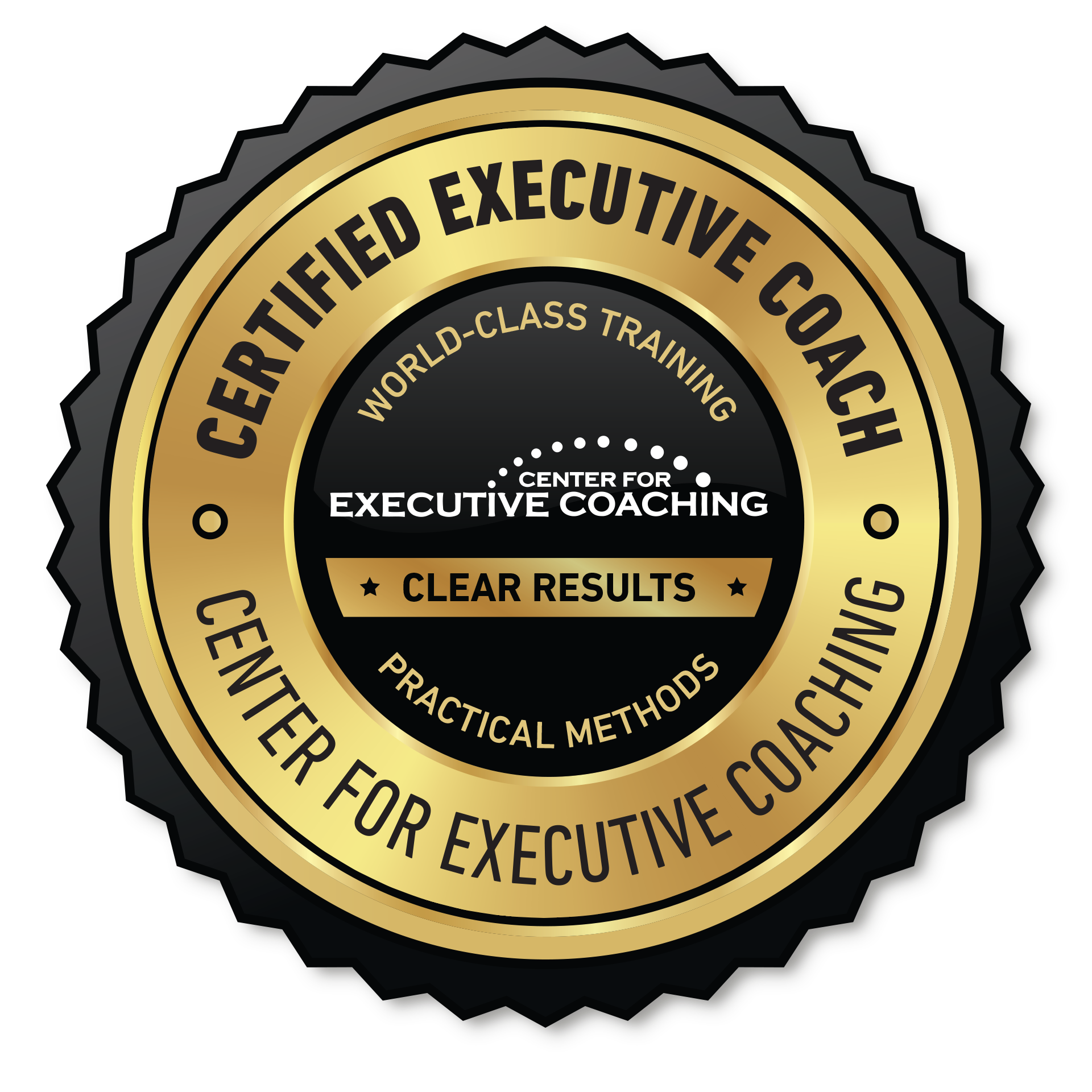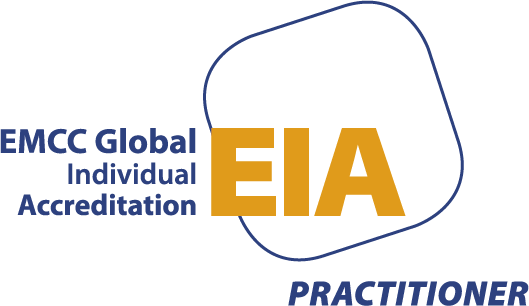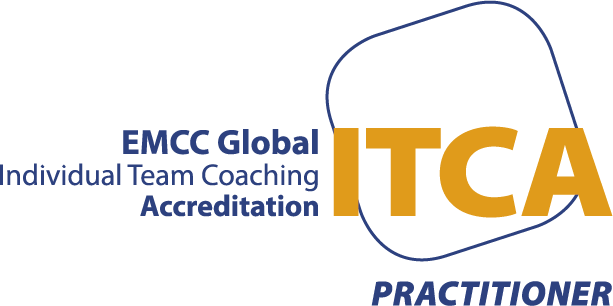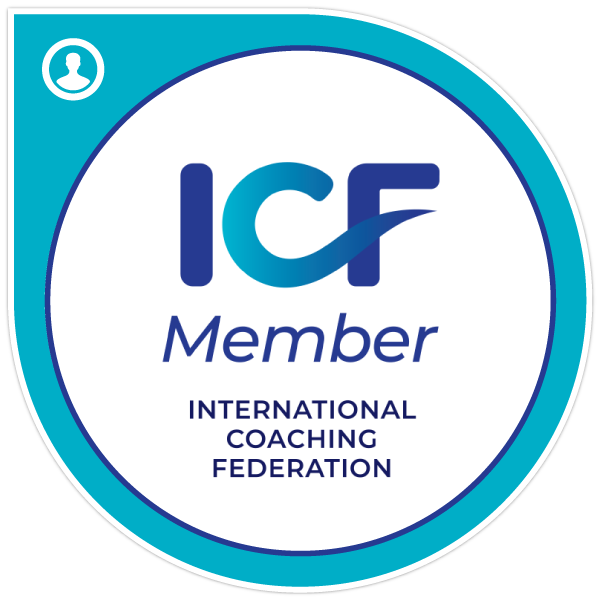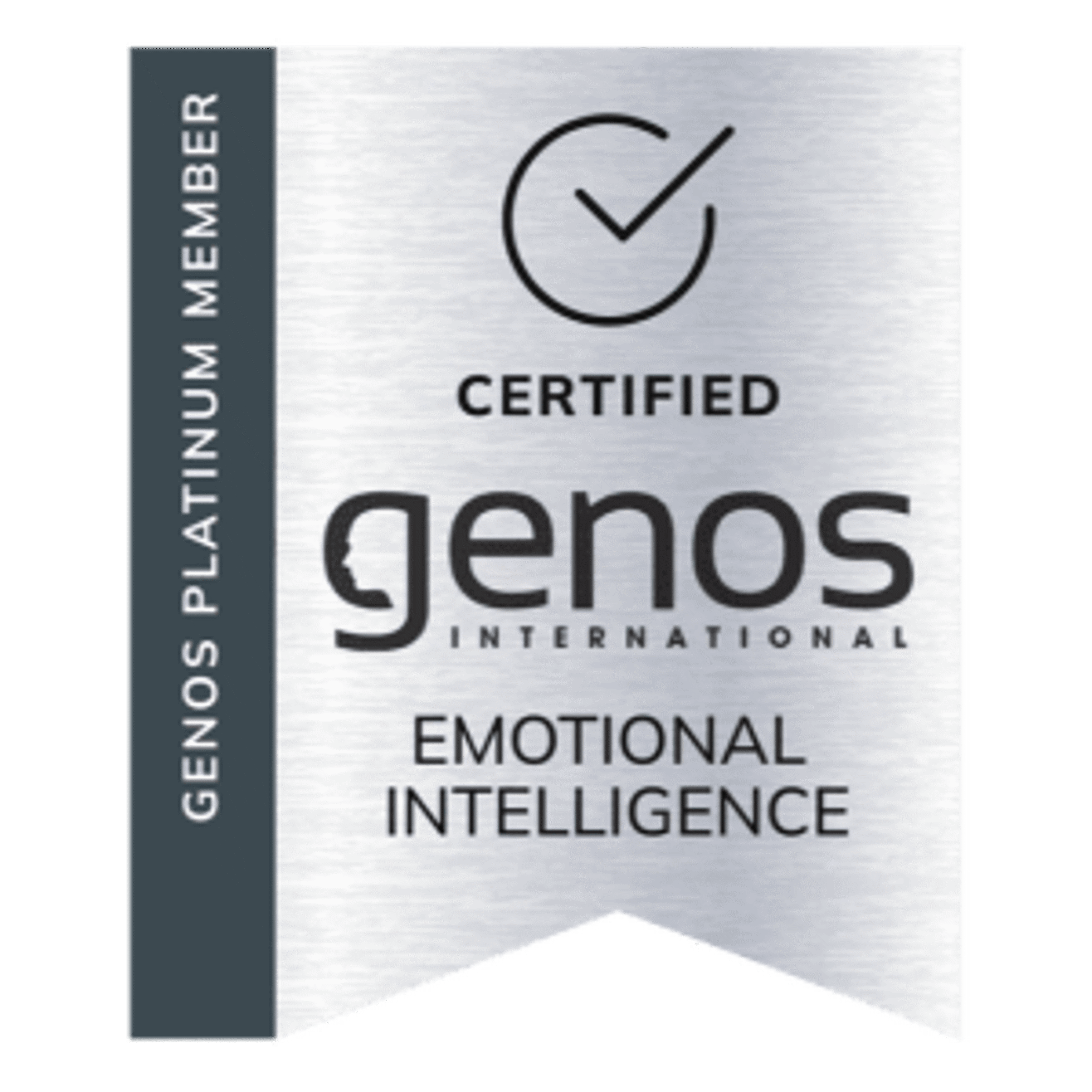Here are 10 proven ideas you can put to use right away to increase your executive presence and make what works for you even better.
1) Keep Developing Your Presentation Skills: Leaders with strong executive presence almost universally possess powerful and persuasive presentation skills. They deliver well structured and engaging presentations, both spoken and written, with poise and confidence. They communicate clearly, concisely, and with conviction. They know how to read the room and adapt their communication style as needed.
As with any endeavor, the best way to master it is to practice it. Join a local Toastmasters club, get training in public speaking, write consistently and review and edit what you write, watch the great communicators in action via video or audio recordings and carefully note how they do it. Polishing your presentation skills will greatly enhance your executive presence.
If you are seeking to be more persuasive and influential, review the work of Robert Cialdini. He’s an expert on influence and has been generously posting tips on LinkedIn to help you. Once you’re on his profile, scroll down and click on Videos to see a ton of useful tips.
We have also posted a lot of videos related to public speaking improvement on YouTube, which you can find here. 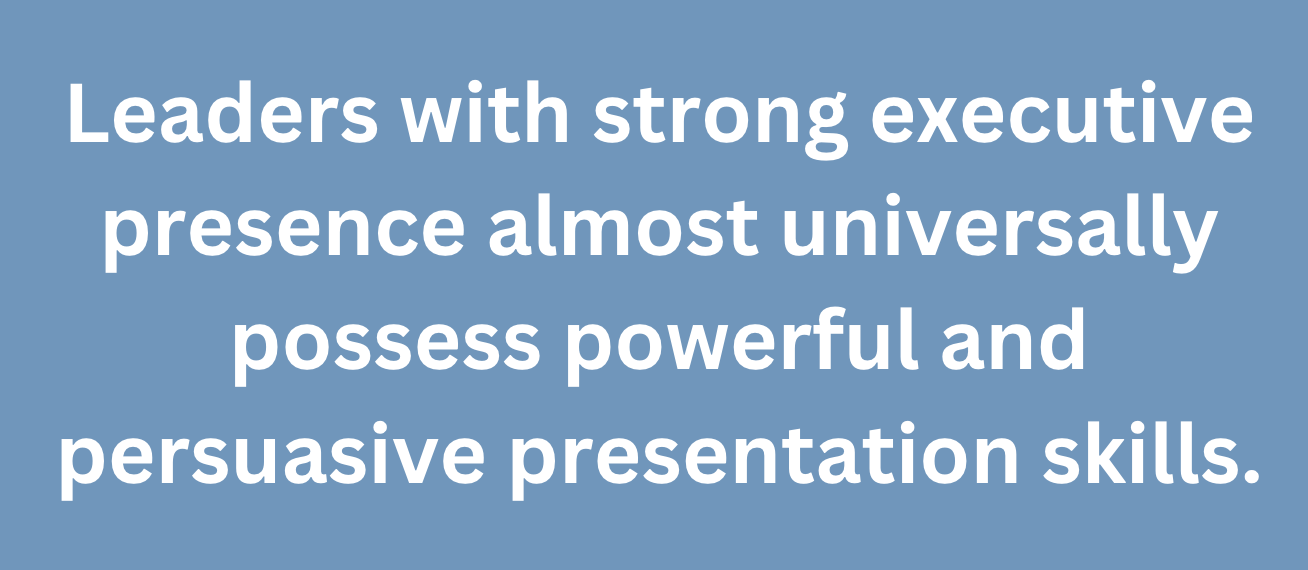
2) Learn to Speak Succinctly: A surefire way to turn people off in meetings is to go on and on. Why take 5 minutes to answer a question and go off on multiple tangents when you could have answered it in 1 minute? The ability to speak succinctly is a master skill that will set you apart from many leaders who just can’t seem to get there.
This is especially important when giving presentations to executives. They require you to get to the point quickly and be prepared to answer questions with short and clear answers.
If you’re giving a presentation and you can see that people are looking away, looking impatient, interrupting you frequently, or even asking you to speed it up and cut to the chase, then you know you need to improve in this area.
To speak more succinctly, study people who are regularly interviewed on news programs. They have developed the skill to speak in sound bites. You want to develop that skill, too. Think of the most important point in response to a question and just share that. Skip loads of context behind your answer. Give clear guidance on what single next action you recommend.
You can also carefully watch and listen to leaders in your organization. Are they succinct speakers? Emulate their methods.
For great guidance on the topic of speaking more succinctly, get the book, Pitch Perfect by Bill McGowan.
3) Grow and Refine your Emotional Intelligence: This is another area that we’ve explored extensively in blog posts and in an e-book. Suffice to say here, there’s a direct correlation between your level of emotional intelligence and your level of executive presence. The better you are at such aspects of emotional intelligence as self-awareness, empathy for others, and managing your emotions (especially in difficult or stressful situations) the more executive presence you’ll project. To advance this goal, you need to inspire others and build positive relationships with them. Without having developed genuine emotional intelligence, you’ll be challenged to achieve that. 
A few tips to get you started.
- Consider taking a self-assessment. We provide the well known and highly respected Genos Workplace self-assessment. You’ll be able to assess your own skills across six EI competencies and see key areas where you can improve. You’ll also be able to compare your results against a benchmark where others usually land. You can learn more about this and other Genos assessments here.
- Endeavor to improve in one way. For example, one of our past clients knew they needed to improve their emotional intelligence skills. As we worked together we sought to determine one new behavior they could install that would make a real difference. We decided it was that little bit extra in relation to showing they cared about the other person. So, with each interaction, they thought of a way they could give a little bit extra. With a team member who’d turned in a key deliverable on time, they could acknowledge the effort and genuinely thank them. For their admin who helped them schedule an important meeting, they could show appreciation for pulling everyone together and finding a time that worked for all. In the past, they might have just said, “Thanks.”. Now, they’d add a little extra. Want to learn more about this client and what they were able to accomplish? They are featured in one of our case studies.
- Read a book on the topic. One book we’ve recommended numerous times to our clients is Your Brain at Work from Dr. David Rock. It may not be presented as a book on EI, but trust us that it’s woven in there. We also recommend Conversational Intelligence by Judith Glaser. This book has proven to be a game changer for many and we’ve recommended it countless times. Our head coach also learned directly from Judith. You might also appreciate books written by Daniel Goleman.
4) Be Inclusive and Openly Seek Feedback: The executive who asks others for their input and opinions, always listens intently to what others have to say, and welcomes feedback is a leader who garners deep loyalty and respect.
It hardly comes naturally to leaders to ask for feedback. Worse, people who report up to the leader are often hesitant to give it. This means that feedback for leaders is something of a rarity. Executive presence is largely driven by how others perceive you. Without feedback you won’t know what to work on, adjust and amplify. Therefore, boost your executive presence by asking trusted colleagues or mentors for their constructive criticism on your communication and leadership style. We created a video on feedback that may be helpful here.
The other aspect of this tip is to welcome input from others on decisions and strategies. As a leader you may have strong intuition and instinctively know what to do in a variety of situations. You’re also likely quite independent. Many leaders are. So, you’ll have to fight your natural tendency to decide and act. Slow it down, get the input of others and make decisions informed by the range of input you’ve received. Of course you can’t do this for every decision but doing so when you can will communicate to others that you don’t see yourself as the end all be all who doesn’t need others. That’s not executive presence today.
5) Hire An Executive Coach: You aren’t the only one who’s grappled with developing an effective leadership presence. One-on-one coaching with a certified executive coach could well be the accelerant you need to take your leadership to the next level and fully develop your executive presence. If you’re new to a role or eyeing an upcoming round of promotion decisions, hiring a coach just might be the edge you need to succeed. Contact us to learn more.
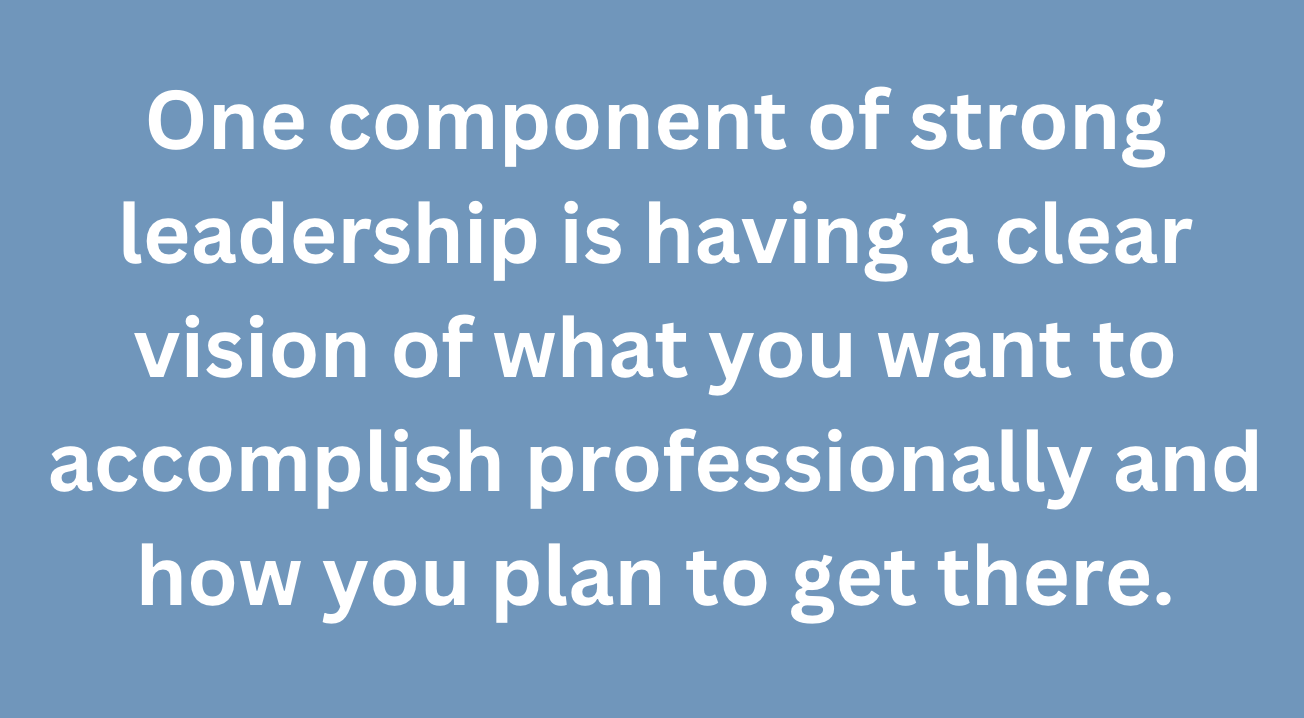
6) Boost Your Non-Verbal Communication via Appearance and Body Language: How you look and act says a lot about who you are. Therefore, dress for the role you are seeking and not the one you have. It’s too tempting to dress down and be completely comfortable, but does that style choice cultivate the presence you’re seeking to establish?
If you’re not sure how to dress for success, consider hiring an image consultant. Our head coach did just that years ago and immediately received tips to uplevel his wardrobe and look better. Investing in yourself is often one of the best investments you can ever make.
In addition to your appearance, your body language needs to be confident. Maintain good posture, make eye contact, and use subtle gestures that convey authority and engagement. There are inexpensive courses on LinkedIn Learning that can help you to better understand the role body language plays in communication and presence. Here’s one highly rated course.
7) Practice Mindfulness: Mindfulness refers to “a mental state achieved by focusing one’s awareness on the present moment, while calmly acknowledging and accepting one’s feelings, thoughts, and bodily sensations.” Its practice can take many forms including meditation, yoga, breathing exercises, quiet walks in the woods, or listening intently to soothing music.
Keep an open mind about meditation. Our head coach gave it a go years ago after hearing so many successful people say they appreciate its power to still one’s mind. Now he swears by it and seeks to get in a short session every day.
Meditation practitioners benefit from its power to help one stay relaxed, focused, and to observe one’s thoughts and feelings rather than get swept up by them. Calmness, attention to detail, and the ability to filter out distractions are all inner qualities that can outwardly manifest themselves in your executive presence. Mindfulness can help you get there.
The ability to stretch the time between stimulus and response is also supported by mindfulness. Meditation and other mindfulness exercises can get you there. People appreciate a leader who is able to be a calming presence in stormy times. Be that leader.
8) Strengthen Your Personal Brand: Having a clear and compelling personal brand works to support your executive presence. People know who you are, what you stand for and how to describe you to others.
Work on developing your professional image and reputation within your field. Become an expert in your industry. Write and publish articles on Medium, LinkedIn or a personal blog that will be read by your peers. Speak at industry-related events. Consider writing a book or e-book based on your expertise and knowledge. When you’re an acknowledged expert in your field, the resulting prestige will increase your confidence while establishing a strong personal brand.
Another way to think about your personal brand is to imagine what three adjectives you’d like people to use to describe you. Then work to cultivate that impression by the way you show up in meetings, how you lead your team, and how you approach collaboration. Watch our video on reshaping your personal brand for some tips to get started. 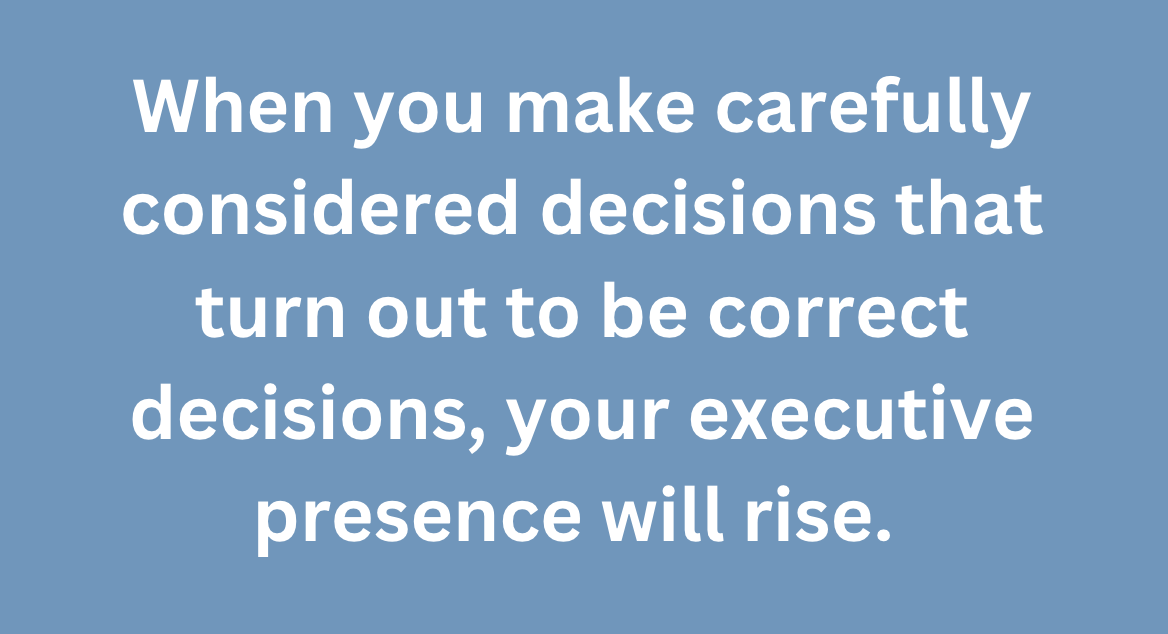
9) Articulate Your Vision: One component of strong leadership is having a clear vision of what you want to accomplish professionally and how you plan to get there. Take considerable time to draft the elements of your leadership vision, then weave those elements together in a concise and coherent vision statement.
Practice saying this statement aloud so you can convincingly articulate it to your team, customers, and the media. Leaders with clear and powerful vision statements are leaders with executive presence.
If you’re unsure of your vision, then start with your purpose in the organization. Why does your role exist? How does your role support the vision of the greater organization? When you think of the various stakeholders you serve, what do you think are their distinct visions? What do they mean to you? How do they inspire you? Contemplating these questions should help you to get clearer on your personal vision.
10) Become a Sound and Decisive Decision-Maker: Timely and effective decision making is a hallmark of a strong leader. Indeed, your leadership will likely be defined by the decisions you make, both small and large. When you make carefully considered decisions that turn out to be correct decisions, your executive presence will rise.
This is one of those areas that are make or break for leaders. If you think your decision-making skills are lacking, then it’s time to strengthen your ability. There are countless books on decision making. One we highly recommend is Decisive by Chip and Dan Heath. They lay out numerous ways to make better decisions.
We also highly recommend Thinking, Fast and Slow by the late Daniel Kahneman. It’s a long read, but so worthwhile. If you’d like to start with a shorter read, we have a blog post that represents a solid way to start: “Ten Essential Decision-Making Tips for Managers.”
•••
We hope this article has helped you with tried and true ways to elevate your executive presence. If you would like to work directly with an executive coach to accelerate your growth, then contact us or schedule time with our head coach. Learn more about our executive coaching services here.
Here are more resources related to this topic
Articles:
- Executive Communication Training
- 10 Top Traits of Today’s Successful CEO
- Use Executive Presence to Springboard Your Career
eBook:
Videos:
- TOP 10 Characteristics of a Leader With Executive Presence PART 1
- Top 10 Characteristics of a Leader With Executive Presence PART 2
Photo copyright: Featured photo is from ©Canva. Secondary photo is from ©Canva.
